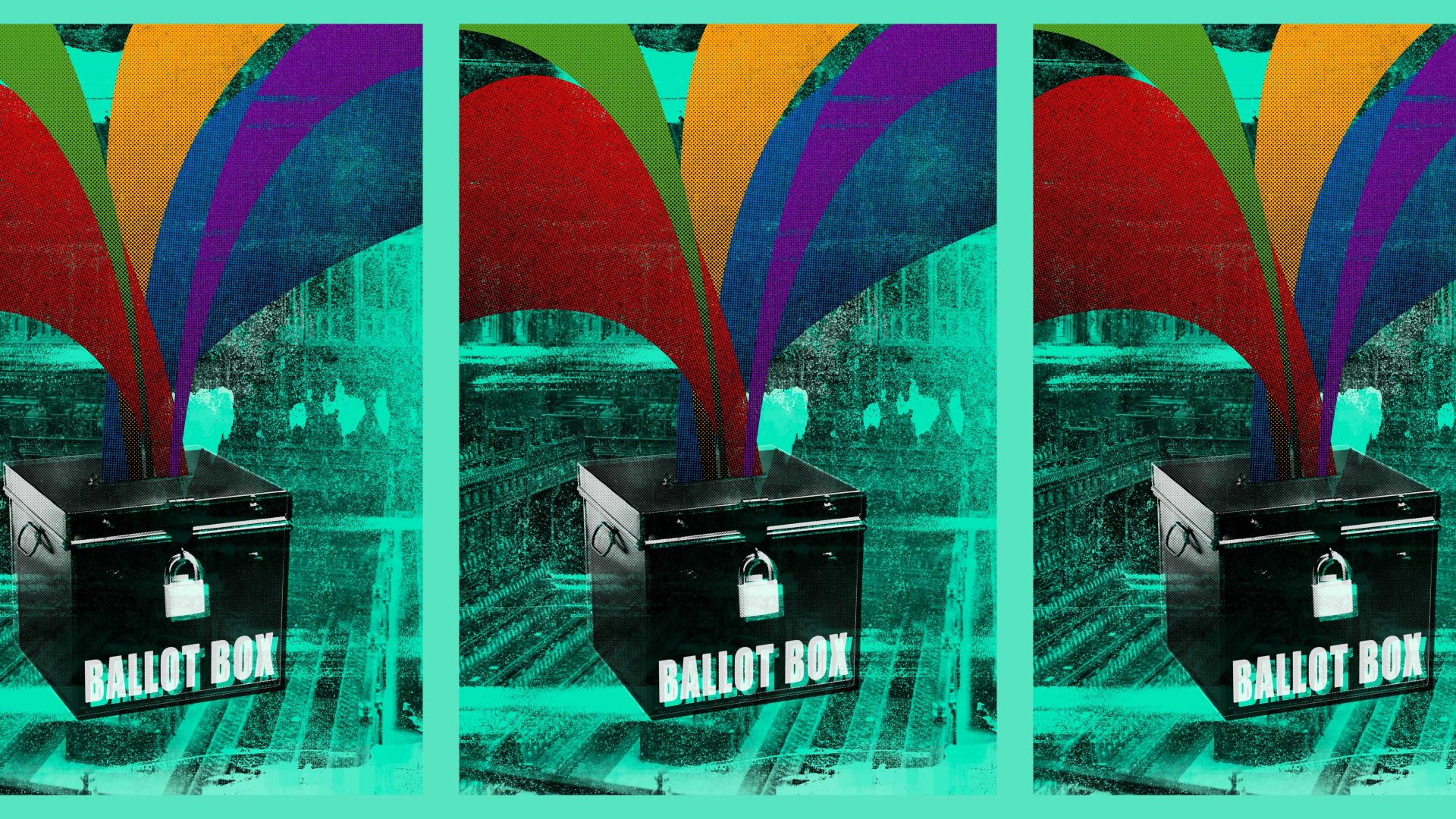As the general election approaches, we will be bombarded with a bewildering range of polls and predictions. Here is your nine-step survival guide to this year’s fun and games:
1. Polls wobble about. Watch for the signal, ignore the noise.
For much of 2023, the great majority of polls put Labour on 45%, Conservatives 27%, both plus or minus three. Nothing really moved. Yet story after story told us that the Conservatives were either recovering or slipping further back.
For example, two days after Jeremy Hunt’s autumn statement, the front page of the Times announced that the chancellor’s new tax policies had given the Tories “a four-point boost”. According to YouGov, Conservative support had jumped from 21% to 25%. Six other post-Hunt polls found no such boost. Indeed, YouGov’s own figure was much the same as 17 of its 18 previous polls. The exception was a sudden dip, to 21%, the week before. The post-Hunt “boost” looks like the undoing of a polling blip, rather than a surge in Tory support.
Forty years ago, the eminent political scientist Ivor Crewe presented his first law of polling: “However static public opinion actually is, the polls enable the media to give the impression of flux, change and excitement.” Plus ça change…
2. Beware predictions of a huge Labour landslide.
We have been frequently told that Labour is on course for majorities of 200-plus, beating the 1997 figure of 179. These assumptions came from a type of survey that uses the catchily named “multilevel regression with post-stratification” (MRP) process.
Here’s the problem. MRP assumes that the higher the local support for the Tories, the more votes they will lose. This means that the swings to Labour will be well above the national average wherever the Tories seem to have comfortable majorities. As a result, MRP predicts that many Tory MPs that won 60-70% of the vote in 2019 will be defeated.
Historically, swings between Labour and Conservative have never behaved like that. Of course, individual seats vary; but in election after election, swings in safe seats have been much the same as in marginal seats. MRP assumes that the next general election will overturn more than seven decades of political theory. It’s a brave assumption.
3. Expect Labour’s lead to slip as the election draws close.
We are entering the final stage of the sixth Conservative-led parliament since 1979 to last at least four years. The chart below shows what happened to the gap between the two main parties in the previous five:
The pattern is clear. And there is good reason to expect something similar this time. Up to one in three people who voted Conservative last time now tell pollsters they don’t know, or won’t vote. I would be surprised if they all stayed at home this coming election day. It is more likely that many, though by no means all, will return to the Tory fold.
4. It would take a huge winter surge for Rishi Sunak to call a spring election.
One argument for an early election is that the Tories know they will lose, but fear the longer they delay the election, the heavier the defeat will be.
I wonder. Suppose Labour’s polling lead starts to slip, but is still in double figures in the spring. Sunak recognises that he has no chance of winning an early election, even if Jeremy Hunt finds billions under the sofa before the March 6 spring budget. Who knows what might happen if he waits?
Sure, things might get worse. But they might not. Moreover, something completely unexpected might turn up. Who predicted the Covid pandemic, or Russia’s invasion of Ukraine? Delay might give him no more than an outside chance of a surprise victory. Even so, an outside chance is better than no chance. Unless Labour’s lead has collapsed, he will wait.
5. Tactical voting is back; but we don’t know how big its effect will be, and pre-election polls may not tell us.
In 1997, anti-Conservative tactical voting cost the party around 30 seats. This didn’t happen in 2019 – Jeremy Corbyn and Jo Swinson lacked the cross-party appeal of Tony Blair and Paddy Ashdown – but recent by-elections and local elections suggest that tactical voting is back.
How much will it hurt the Tories? Perhaps a lot, but we can’t be certain until election night. Tactical voting is something that many people decide to do just before polling day. Polls might not catch these last-minute decisions.
6. The SNP will lose seats; but, again, polls will find it hard to predict how many.
The SNP’s support is far more evenly spread than that of any other major party. In two-thirds of the seats it fought last time, the SNP gained between 40% and 50% of the vote. An even distribution of votes gives them lots of seats when they are popular, but can cost them dearly when they slide. They are defending majorities of less than 10,000 in 30 of the 48 seats they won last time. The kind of swing to Labour reported by recent polls suggest a lot of very tight races next time, too close to call in advance. Even the most accurate polls could make it hard to predict whether the SNP will remain the largest party north of the border or fall well behind Labour.
7. The Red Wall was the big story last time; it might be a non-story this time.
The Tories gained some traditionally Labour Red Wall seats in 2019 on spectacular swings: for example, more than 15% in Dudley North, Redcar and Bassetlaw, compared with 5% nationally. This time, the current evidence suggests they will swing like the rest of the country.
The polling firm Redfield & Wilton Strategies regularly question voters in 40 Red Wall seats. As ever, it’s best not to rely on individual polls (see point No 1, above). If we combine the results of the last six surveys, they show the Red Wall Conservatives down 17 points since 2019, and Labour up 10. The same company’s national polls over the same period show the Tories down 18 and Labour up 11 – much the same.
Could Reform make a difference? In 2019 the intervention of the Brexit Party in Labour marginals cost the Conservatives up to 25 seats, by splitting the votes of those who backed Leave in the 2016 referendum. Richard Tice, Reform’s leader, wants to have the same kind of impact this time, and damage the Tories. There is little sign of this so far, but the Tories are still keen to crush Reform.
8. Just now, Keir Starmer looks set to become the next prime minister, probably with a majority, but not a three-figure landslide.
Given the uncertainties over Scotland and tactical voting, translating national votes into seats is tricky. But as a rough rule of thumb, Labour probably needs a 5% lead in the popular vote to secure an overall majority, a 10% lead for a majority of 50, and a 15% lead for a majority of 100.
That seems to span the range of likely outcomes. But past elections have produced shocks. No forecast with months to go can completely rule out another one. However, if Labour falls short of outright victory…
9. The Conservatives will still find it hard to stay in power – even if they are the largest party.
In a hung parliament, the important question is not which will be the largest party, but whether the new House of Commons contains more pro-Tory or anti-Tory MPs. If the Conservatives fall short of outright victory, their only possible ally is the Democratic Unionist Party – and even that is not certain.
Here’s one scenario – an illustration, not a prediction. Suppose the Conservatives win 300 seats, Labour 270. That leaves 80 to be divided between other parties. Let’s be generous and assume the DUP retain all eight of the seats they won last time. The maximum pro-Tory total rises to 308. That leaves 72 to be accounted for. Sinn Féin MPs don’t take their seats; they won nine last time. That leaves 63. It’s likely that every one of these will be anti-Conservative (Liberal Democrat, SNP, Plaid Cymru, Green, and Alliance and SDLP in Northern Ireland). Add them to Labour and there would be 333 anti-Tory MPs, comfortably ahead of the 308 pro-Tory. Sunak would be out; Starmer would become prime minister, leading either a coalition or, more likely, a minority government.
Now that the Fixed Term Parliament Act has been repealed, Starmer would then have the power to dissolve parliament at any time. That prospect would terrify many MPs: the Conservatives above all, whose defeat could trigger a civil war. They wouldn’t want to face the voters again until they were in far better shape. The threat of an early second election should keep Starmer safely in Downing Street for quite some time..




